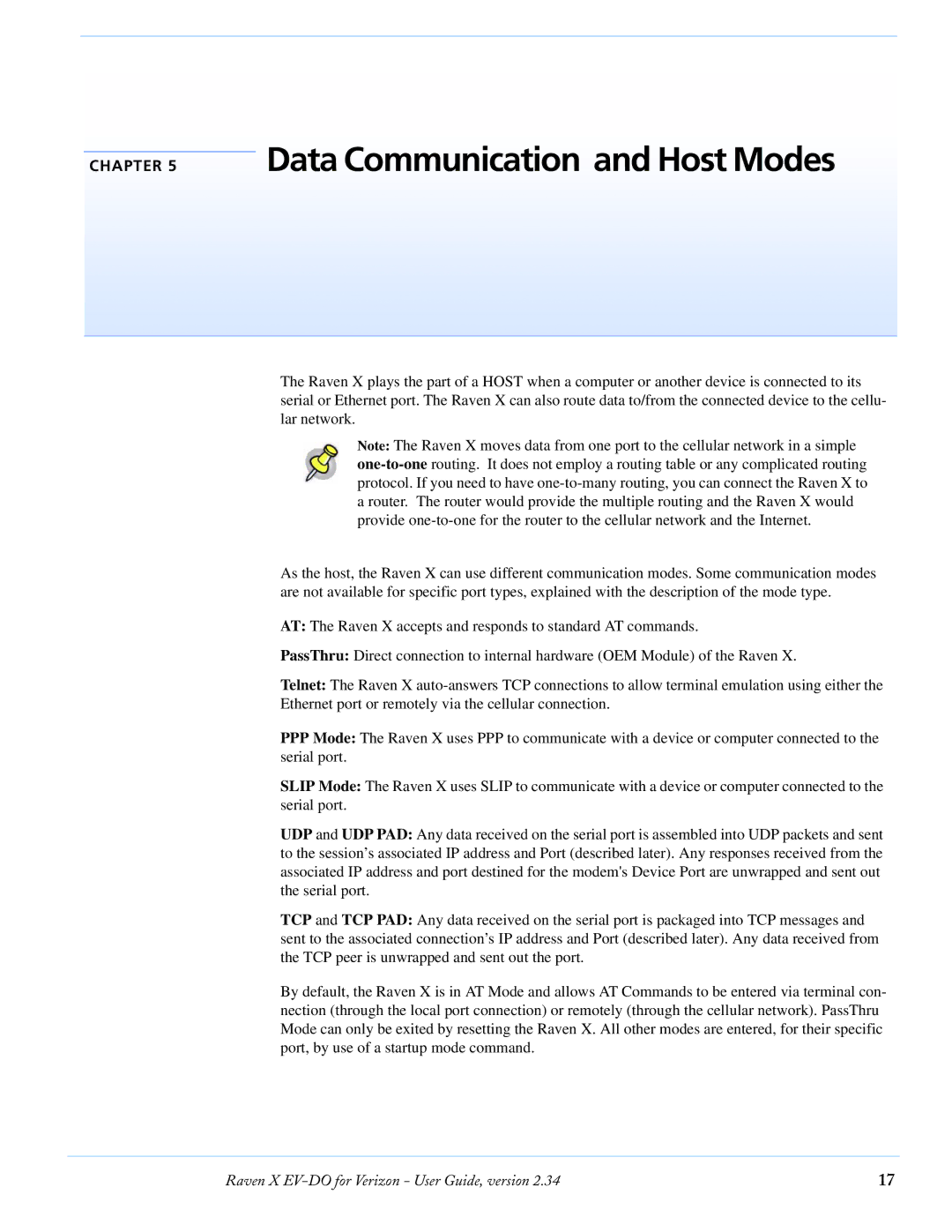
CHAPTER 5
Data Communication and Host Modes
The Raven X plays the part of a HOST when a computer or another device is connected to its serial or Ethernet port. The Raven X can also route data to/from the connected device to the cellu- lar network.
Note: The Raven X moves data from one port to the cellular network in a simple
As the host, the Raven X can use different communication modes. Some communication modes are not available for specific port types, explained with the description of the mode type.
AT: The Raven X accepts and responds to standard AT commands.
PassThru: Direct connection to internal hardware (OEM Module) of the Raven X.
Telnet: The Raven X
PPPMode: The Raven X uses PPP to communicate with a device or computer connected to the serial port.
SLIP Mode: The Raven X uses SLIP to communicate with a device or computer connected to the serial port.
UDP and UDP PAD: Any data received on the serial port is assembled into UDP packets and sent to the session’s associated IP address and Port (described later). Any responses received from the associated IP address and port destined for the modem's Device Port are unwrapped and sent out the serial port.
TCP and TCP PAD: Any data received on the serial port is packaged into TCP messages and sent to the associated connection’s IP address and Port (described later). Any data received from the TCP peer is unwrapped and sent out the port.
By default, the Raven X is in AT Mode and allows AT Commands to be entered via terminal con- nection (through the local port connection) or remotely (through the cellular network). PassThru Mode can only be exited by resetting the Raven X. All other modes are entered, for their specific port, by use of a startup mode command.
Raven X | 17 |
